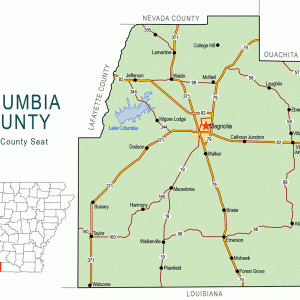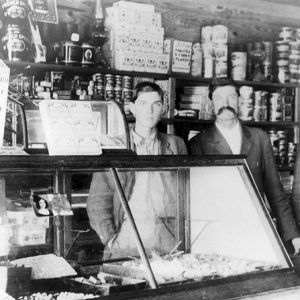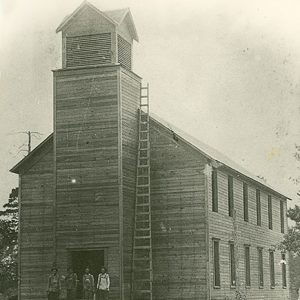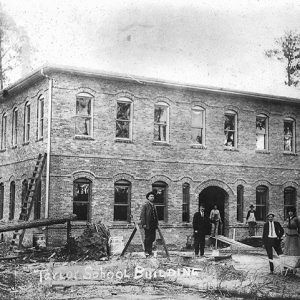calsfoundation@cals.org
Taylor (Columbia County)
| Latitude and Longitude: | 33°06’01″N 093°27’40″W |
| Elevation: | 239 feet |
| Area: | 0.99 square miles (2020 Census) |
| Population: | 579 (2020 Census) |
| Incorporation Date: | May 10, 1913 |
Historical Population as per the U.S. Census:
|
1810 |
1820 |
1830 |
1840 |
1850 |
1860 |
1870 |
1880 |
1890 |
1900 |
|
– |
– |
– |
– |
– |
– |
– |
– |
– |
– |
|
1910 |
1920 |
1930 |
1940 |
1950 |
1960 |
1970 |
1980 |
1990 |
2000 |
|
– |
275 |
263 |
335 |
574 |
734 |
671 |
657 |
621 |
566 |
|
2010 |
2020 |
|
|
|
|
|
|
|
|
|
566 |
579 |
|
|
|
|
|
|
|
|
The city of Taylor is in southwestern Columbia County, roughly five miles north of Springhill, Louisiana, on U.S. Highway 371. Established by the railroad and by the timber industry, Taylor is now associated with recreational opportunities on nearby Lake Erling.
The prehistoric Caddo lived in what would become Columbia County. The land was sparsely settled, though, both before and after the establishment of the county in 1852. However, Albert C. Taylor, a second-generation settler in Columbia County, had a business at the site of Taylor even before the construction of the Louisiana and Arkansas Railroad in the 1880s. The railroad, built by the Bodcaw Lumber Company, ran a spur eastward from the location of Taylor’s business around 1895, and a post office was established in Taylor’s store in 1898. Because he was the first postmaster, the office was named for him, as was the developing community. Only fifteen people lived in Taylor in 1900, but the community grew rapidly, with new stores established by George Pickler and Tom Hearn. Dr. W. H. Horn bought forty acres of land from Taylor in 1901 and had them platted for a city by surveyor J. L. Pope. The city was incorporated in 1913.
A bank was established in Taylor around 1915. During its few years of operation, Horn, Pickler, and Joe L. Davis each served as bank president, but the bank was liquidated in 1923. The next year, a second bank was formed with Davis again as president, but the bank failed in 1931 due to the Great Depression. Davis later served as Columbia County judge from 1939 to 1945.
In 1958, the International Paper Company created a lake in eastern Lafayette County to supply water for its plant in Springhill, Louisiana. The lake was named for Erling Rills, who was then vice president of the paper company. Anticipating the tourism potential of the lake, Taylor businessman Billy Bland began building a fish hatchery east of the lake in 1957 to provide bait for visiting fishers. The Billy Bland Fish Hatchery offers goldfish, koi, minnows, catfish, and tropical fish for sale. A wildlife management area (WMA) was created west of the lake in 1970. The pine forest of the WMA shelters deer, quail, turkeys, squirrels, rabbits, and waterfowl, and the lake itself is known for catfish and crappie. The lake is co-managed by the International Paper Company and the Arkansas Game and Fish Commission.
The Taylor School District was consolidated with the Emerson (Columbia County) School District in 2004. Each community has both an elementary school and a high school. The combined enrollment of the two schools in Taylor in 2013 was more than 300 students. Taylor is home to several Baptist churches and an Assembly of God, as well as Bass Haven Restaurant and the Summit Health and Rehabilitation Center. The population of Taylor was 566 in the 2010 census.
For additional information:
Billy Bland Fish Hatchery. http://www.billyblandfishery.com/ (accessed September 29, 2022).
Killgore, Nettie Hicks. History of Columbia County. Magnolia, AR: Magnolia Printing Company, 1947.
Steven Teske
Butler Center for Arkansas Studies
 Columbia County Map
Columbia County Map  Hearn's Store
Hearn's Store  Taylor Baptist Church
Taylor Baptist Church  Taylor School
Taylor School 



Comments
No comments on this entry yet.